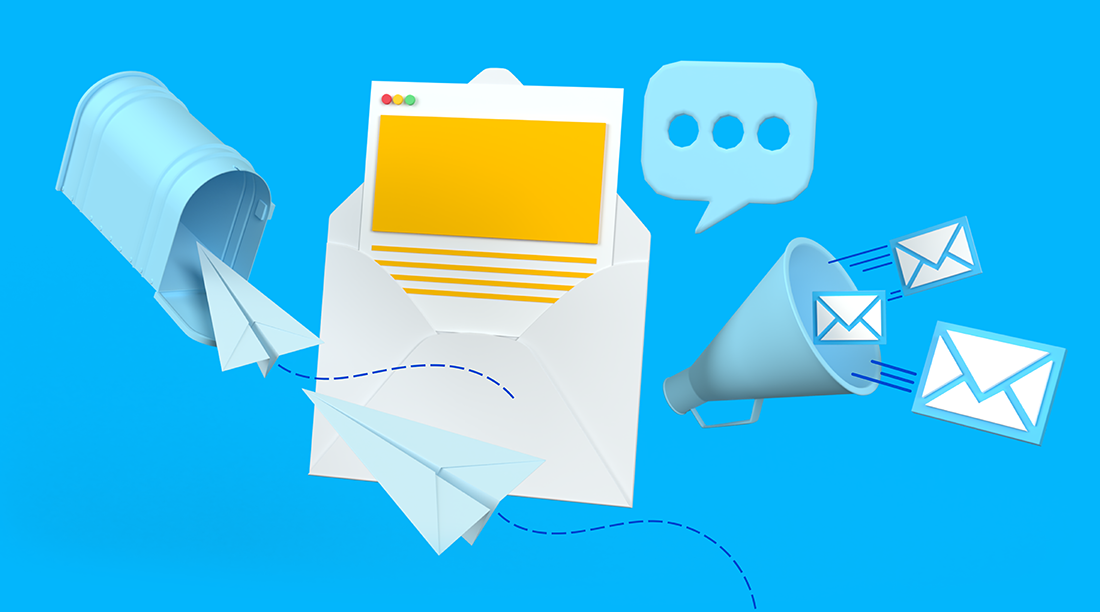
Email marketing is one of the most popular and effective tools available to marketers today. It allows businesses to reach their target audiences quickly, easily, and cost-effectively. With a well-crafted email campaign, businesses can drive engagement, build customer relationships, generate leads, increase sales, and more.
An email marketing strategy begins with defining the audience you want to reach and what goals you’d like to achieve. Once these elements have been determined, it’s time to create an email that will capture the attention of your target market. Crafting the right message involves using engaging subject lines, attractive visuals and compelling copy in order to get recipients to open the email. Additionally, personalizing emails with user data or other relevant information can help create a stronger connection with customers.

Once the content has been created, segmenting lists into different categories based on factors such as geography or past purchase history can help ensure messages are tailored specifically for each individual recipient. This helps ensure higher clickthrough rates by targeting users who are likely interested in whatever product or service is being advertised.
Finally, measuring performance is key in determining whether an email campaign was successful or not. By tracking metrics such as open rate, click-through rate (CTR), unsubscribe rate, bounce rate and conversions, marketers can assess how well their campaigns performed against pre-set objectives and adjust future strategies accordingly.

Email marketing remains one of the most powerful tools available for businesses looking to engage customers and promote products/services in an efficient manner. When used properly it can be leveraged to drive brand awareness while generating leads and increasing revenue. However, it is important to remember that email marketing is a complex process, and requires careful planning in order to be effective. By researching industry trends and understanding customer behaviour, marketers can craft more targeted messages that are likely to resonate with their target audience. Additionally, tracking performance metrics will allow them to determine how successful campaigns have been and where improvements can be made for future efforts.
Email marketing is an effective way for businesses to reach out directly to their customers with relevant offers and promotions. It involves creating emails that are tailored specifically for each individual customer based on their preferences and interests. This type of personalized communication helps build relationships with customers, increases brand loyalty and ultimately leads to higher sales. It also serves as an important touchpoint in the customer journey by providing useful content such as product updates, special offers or educational materials.

For email marketing campaigns to be successful they must be well planned and executed effectively. Marketers should begin by researching industry trends to understand what types of content resonates best with their target audience. They should also take into consideration any legal requirements when crafting emails such as GDPR regulations or spam laws. Once these steps have been completed, it’s time to create compelling subject lines and engaging content that will capture the attention of recipients. Including personalization elements such as customer names or other preferences within emails further entices readers who are more likely to open and respond positively.
To ensure the success of an email marketing campaign, it’s important to have a clear call-to-action (CTA) that encourages recipients to take the desired action. Marketers should also consider segmenting their contacts into different lists based on customer interests or demographics. This allows for more targeted emails that can increase engagement rates and provide customers with content they actually want to read. It is also beneficial to use A/B testing when crafting email messages in order to determine which version receives the best response from users.
In addition to these tactics, marketers should pay close attention to analytics related to their campaigns such as open rates, click-through rates and conversions. Analyzing this data can help them further optimize their strategies by understanding what works and what doesn’t. For example, if an email campaign has low open rates, changing up subject lines may be necessary in order to capture readers’ attention. By staying on top of email metrics, marketers can refine their approaches and continue delivering successful campaigns over time.
Overall, email marketing remains one of the most effective digital marketing strategies available today. When done correctly, it can generate leads and drive sales while providing valuable updates or offers for customers. Successful campaigns require planning, research and analysis in order to create engaging content that resonates with audiences and provides them with incentives for taking action.
Email marketing is an important digital marketing tool used by businesses of all sizes. It enables companies to reach their audiences in a cost-effective and trackable manner, allowing them to build relationships with customers while promoting their products or services. Email campaigns can be targeted towards specific groups of people, making it easier to personalize messages and ensure that they are reaching the right people.
The effectiveness of email campaigns depends on several factors including content quality, timing, subject lines and frequency of emails sent. For example, if an email contains irrelevant information or doesn’t provide incentives for taking action then it won’t be successful regardless of how well timed it was sent out. Similarly, if the message is too long or contains too many images then readers may become overwhelmed and end up deleting it without reading through to the end. The key is finding the perfect balance between informative content, attractive visuals and promotions.
In addition to creating high-quality content, marketers should also keep a close eye on email metrics in order to gauge the performance of their campaigns. They can use data such as open rates, click-through rates and unsubscribe numbers to determine whether or not their strategies are working and make adjustments where necessary. This allows them to stay ahead of trends and adapt quickly if something isn’t working as expected.
Overall, email marketing remains one of the most effective digital marketing strategies available today. When done correctly, it can generate leads and drive sales while providing valuable updates or offers for customers. Successful campaigns require planning, research and analysis in order to create engaging content that resonates with audiences and provides them with incentives for taking action. Staying on top of email metrics also helps marketers refine their approaches over time so they can continue delivering successful campaigns.
